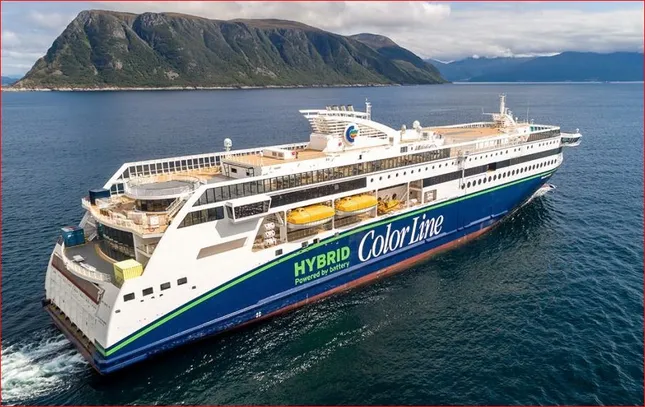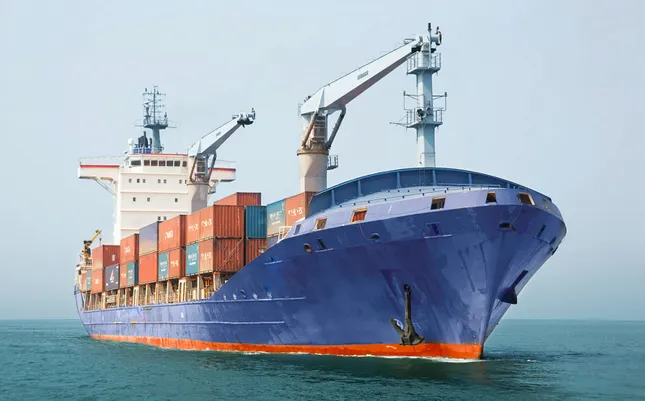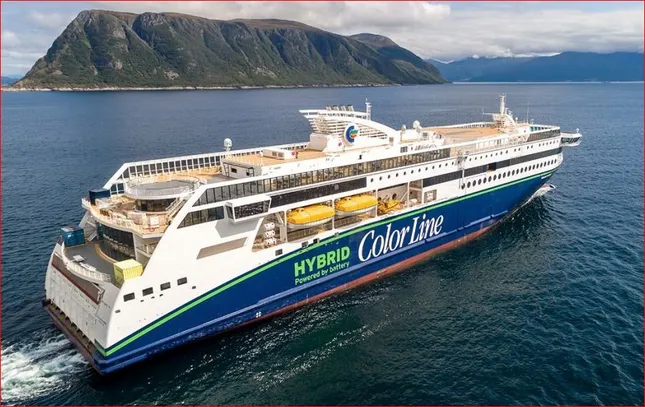The United Nations (UN) reports that the maritime transport industry carries approximately 90% of global trade, accounting for nearly 3% of global emissions. This amounts to about 1 billion tons of CO2 and greenhouse gases emitted annually, which would rank the industry as the sixth largest polluting country if it were a nation-state. If left unchecked, the sector’s emissions are projected to reach 90-130% of 2008 levels by 2050.
After years of intense negotiations, members of the International Maritime Organization (IMO) reached a landmark agreement in late April aimed at curbing greenhouse gas emissions from international shipping activities.
As per the agreement, ships will be charged a fee of 380 USD for each ton of CO2 emitted beyond the allowed threshold, which equates to nearly 10 million VND. Additionally, ships that exceed the higher emission cap will be subject to an extra surcharge of 100 USD, or over 2.5 million VND per ton.

Ships may be charged a fee of 380 USD, equivalent to nearly 10 million VND, for each ton of CO2 emitted beyond the permitted limit. Image: Ulstein.
The revenues generated from these ship emission charges will be channeled into the IMO’s Net Zero Fund, which is estimated to amass around 40 billion USD by 2030. A portion of this fund will subsidize zero-emission fuels and technologies. Ships operating with zero or near-zero emissions will be eligible for financial incentives from the fund. Additionally, the Net Zero Fund will support innovative initiatives, research, infrastructure, and transitions in developing countries.
According to the UN, if the draft regulations of the IMO agreement are officially adopted in October this year, the green solutions for the maritime industry will come into force by 2027.
As a fast-growing export-oriented economy heavily reliant on maritime trade, with over 90% of exports being shipped, Vietnam is expected to be significantly impacted by the IMO’s agreements on carbon pricing and emission standards.
Statistics from Vietnam’s Maritime and Inland Waterways Administration reveal that the average age of the country’s fleet is over 17 years, higher than the global average. Most vessels built before 2020 are typically unequipped with energy-saving technologies, emission control systems, or optimally designed hulls to reduce fuel consumption. Consequently, the implementation of carbon taxes could result in a significant increase in operating costs for shipowners and erode their profit margins.

Carbon taxation may lead to higher operating costs and erode profits for shipowners. Illustrative image: VIMC.
In the context of prevailing tariff tensions, Vietnam’s key export commodities, such as agricultural produce, seafood, wood products, electronics, and textiles, are often highly price-sensitive in the global market. Therefore, increased freight rates due to carbon costs could impact the competitiveness of Vietnamese goods in international markets, especially in regions with stringent environmental standards like Europe and North America.
To meet emission reduction targets, ships will also need to transition to low-carbon or zero-emission fuels like green methanol, ammonia, or hydrogen. However, Vietnam currently lacks the necessary port infrastructure and fuel supply chain to facilitate this green transition.
Given these pressing requirements, shipowners must carefully analyze and calculate their options for compliance. Delaying fleet upgrades and technology adoption will result in a loss of market share and could even lead to exclusion from global supply chains.
The Dwindling Profits of the Maritime Transport Industry
The impending IMO (International Maritime Organization) agreement on carbon taxation will have a significant financial impact on Vietnamese shipping companies. With the new regulations, vessels will be charged an additional fee of nearly 10 million VND for every ton of CO2 emitted beyond the permitted threshold. This development is set to drastically increase operational costs and eat into the profits of these businesses.
Tightening Emissions Testing for Motorcycles
Motorcycles and scooters will need to meet Euro 2 emission standards to be allowed on the roads of Hanoi and Ho Chi Minh City from 2027 onwards.




















